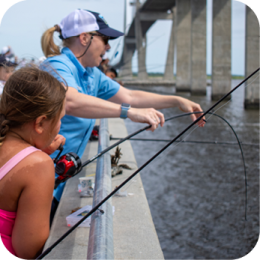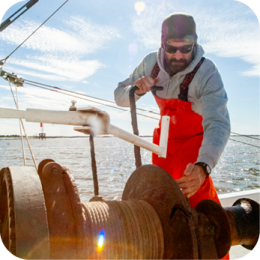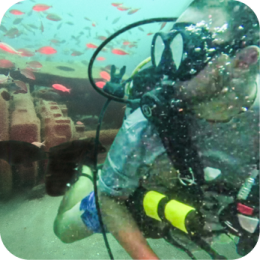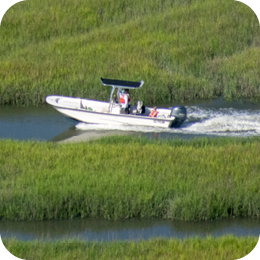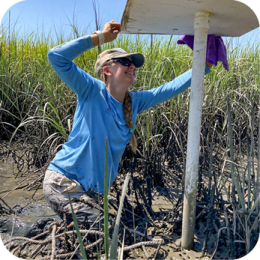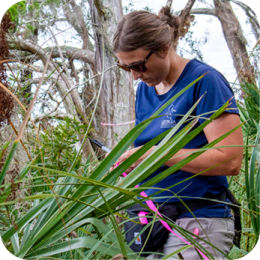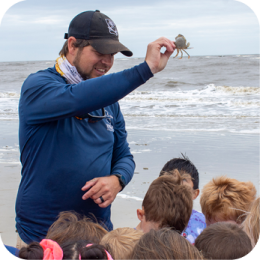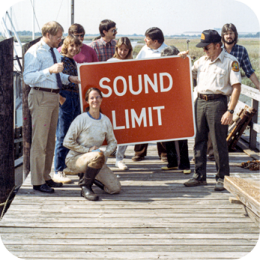This serves as notification from the Coastal Marshlands Protection Committee and the Georgia Department of Natural Resources of a request from City of Brunswick for a Coastal Marshlands Protection Act (CMPA) permit under Official Code of Georgia (O.C.G.A.) 12-5-280 et seq., to maintain a portion of the Howard Coffin Park drainage ditches, construct and maintain a bank stabilization project, and replace a culvert within City of Brunswick, Glynn County, Georgia.
The existing drainage ditches, situated along the western boundary of Howard Coffin Park (HCP) and extending through the center of the park in an east-west alignment, have been identified as priority areas to ensure adequate stormwater conveyance and capacity, and to prevent upstream flooding within the Winsor Park neighborhood. The ditches convey stormwater from Winsor Park in an area from Gloucester Street to the north to Palmetto Avenue on the southern end and as far west as Lee Street. The stormwater enters the system through inlets in the streets and discharges into the ditches from connection pipes under Lanier Boulevard. The ditches drain to the east under Glynn Avenue into Clubbs Creek. There is recently permitted project for excavation of a large portion of the ditch on the upstream end of the system, closer to Lanier Boulevard. There is an existing culvert and associated access road that crosses the project area that impacts approximately 69.1sq.ft. of coastal marshlands. The existing GDOT pipe that flows to Clubbs Creek under Highway 17 impacts approximately 21.2sq.ft of coastal marshlands.
The proposed project is located on the easternmost ~350 linear feet of the drainage ditches and will focus on stabilization of the eroding ditch banks and restoring flow for proper conveyance of stormwater. There is an existing, undersized, and perched culvert that bisects the project area that is exacerbating the already active bank erosion. This section of the ditch is experiencing greater erosion due to the poorly designed culvert, proximity to impervious surfaces, and accelerated tidal exchange. On the southeastern corner of the project area is a section of coastal marshlands that has propagated from prolonged and consistent tidal flooding in the drainage ditch. The flooding in this area has resulted in saltwater intrusion into upland park amenities.
The proposed project is to stabilize the eroding banks of the ditch using nature-based solutions and to improve stormwater conveyance from residential areas by excavation of accumulated sediments and installing a new box culvert. The marshlands component of the proposed project includes excavation of silt, debris, and vegetation from the ditch channel, stabilization of the bank using a variety of nature based products, installation of an 8ft. x 30ft. bottomless box culvert, and construction of a 3ft. tall berm around the southeastern corner of the project area. The excavation of accumulated silts within the ditches and bank shaping will be performed from the upland by backhoe and hauled by truck to an approved upland disposal site.
Approximately 9,997.7sq.ft. of coastal marshlands and uplands will be disturbed during grading of the site. On site materials will be used to create 2:1 and 3:1 slope on the banks to facilitate the installation of several different types of stabilization techniques.
Section 1, the portion of the ditch west of the existing culvert, will be stabilized on the northern bank with approximately 1015.3sq.ft. of DredgeSox. In this location the DredgeSox system will provide a soft and stable shoreline that will reduce the risk of the newly graded bank collapsing and will facilitate regrowth of jurisdictional vegetation. On the southern bank of Section 1, approximately 922.4sq.ft. of Flexamat will be installed along with 433.7sq.ft. of rip rap to secure the toe and prevent scouring. The Flexamat and rip rap toe protection provides a more robust stabilization method along this portion of Section 1 because of the accelerated degradation of the banks and minimal vegetative cover. Accounting for overlap in materials, stabilization of Section 1 of the ditch will result in approximately 2,158.9sq.ft. of total impacts to jurisdictional coastal marshlands.
Immediately east of Section 1 of the project area is the existing access road culvert. This undersized, perched pipe will be replaced with a 42ft. long, 8ft. x 5ft. box culvert. The proposed box culvert will impact approximately 209.8sq.ft. of coastal marshlands.
Section 2 of the project is the portion of the ditch between the proposed culvert and the existing GDOT pipe inlet that runs underneath U.S. 17 to Clubbs Creek. This portion of the ditch system exhibits gentler bank slopes, established vegetation, oyster recruitment, and more upland buffer between the channel and upland infrastructure. The proposed stabilization techniques for this part of the project area will include a softer stabilization approach than Section 1 with more nature-based materials such as oyster bags and tables, coir logs, and coir mats. The western end of Section 2 will be stabilized with an upper layer of Flexamat (1932.4sq.ft.) with a rip rap toe (178.9sq.ft.) directly adjacent to the outlet of the proposed box culvert to protect from scouring during high flows. Looking downstream, the lower layer of rip rap will transition to oyster tables (400.1sq.ft.) on the north and south bank. Further downstream, the upper layer of Flexamat will transition into a combination of coir logs and coir mats (1677.2sq.ft.) at the higher elevations of the graded bank with a toe of oyster bags (582.4sq.ft.) closer to the ditch channel. The coir mat/coir log and oyster bag toe technique will be similar on both the north and south bank for the middle part of Section 2, although the area of transition will be slightly different on each bank. Finally, at the far downstream end of Section 2 the GDOT pipe will be stabilized with Flexamat (195sq.ft.) and rip rap (103.8sq.ft.). Accounting for overlap in the materials, stabilization of Section 2 of the ditch will result in approximately 4,320.9sq.ft. of total impacts to coastal marshlands.
Section 3 of the proposed stabilization project encompasses the area that has been subject to prolonged tidal flooding and has created a salt pan type area. Approximately 356.1sq.ft. of DredgeSox will be used to create a ~3ft. high vegetated berm to encapsulate the area and prevent further saltwater encroachment into the park. An 82sq.ft. bubbler box will be installed at the southern end of the salt pan area, outside of CMPA jurisdiction, to facilitate stormwater drainage to the ditch in a controlled manner. Stabilization of Section 3 of the project area will result in approximately 356.1sq.ft. of total impacts to coastal marshlands.
Total proposed impacts to coastal marshlands will be approximately 7,045.7sq.ft. (0.16 acres) with 226.7cu.yds. of material.
The applicant has stated that there is no upland component for the proposed bank stabilization project.
It is the responsibility of the applicant to demonstrate that the project is not contrary to the public interest and that no feasible alternative sites exist. Impacts to coastal marshlands must be minimal in size. In passing upon the application for permit, the Coastal Marshlands Protection Committee shall consider the public interest: (1) Whether or not unreasonably harmful obstruction to or alteration of the natural flow of navigational water within the affected area will arise as a result of the proposal; (2) Whether or not unreasonably harmful or increased erosion, shoaling of channels, or stagnant areas of water will be created; and (3) Whether or not the granting of a permit and the completion of the applicants proposal will unreasonably interfere with the conservation of fish, shrimp, oysters, crabs, clams, or other marine life, wildlife, or other resources, including but not limited to water and oxygen supply.
A detailed public notice with drawings has been distributed and is available by visiting the Department of Natural Resources website: CoastalGaDNR.org under “Public Notices.”
Please provide this office with substantive, site-specific comments as to why the proposed work should or should not proceed. Comments and questions concerning this proposed project should be submitted in writing and be submitted by the close of business on October 31, 2025 to Paul Tobler, Department of Natural Resources, One Conservation Way, Brunswick, Georgia 31520 or via email at paul.tobler@dnr.ga.gov.
Click here to view Application.
